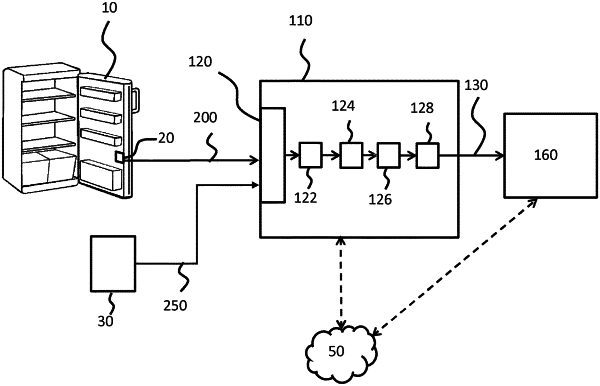| CPC A61B 5/7275 (2013.01) [A61B 5/1116 (2013.01); A61B 5/1118 (2013.01); A61B 5/162 (2013.01); A61B 5/4806 (2013.01); A61B 5/7267 (2013.01); A61B 5/7475 (2013.01); G16H 50/20 (2018.01); G16H 50/30 (2018.01); A61B 2562/0219 (2013.01); A61B 2562/0247 (2013.01)] | 19 Claims |

|
1. A system for monitoring a health status of a subject, wherein the system comprises:
a signal interface adapted to receive input data relating to a plurality of event occurrences for the subject, the input data comprising, for each event occurrence, information representative of at least one of activity of the subject and care activity provided to the subject;
a processor adapted to determine a trend in a health parameter of the subject based on the input data;
a trend analyzer adapted to detect one or more irregularities in the determined trend; and
a monitor adapted to classify each of the one or more irregularities as at least one of an outlier to the determined trend and a changepoint in the determined trend and to determine the health status of the subject based on the irregularity classification of each of the one or more irregularities,
wherein the health status of the subject is representative of at least one of a risk of an adverse event occurrence and a time until care activity requirements change, and
wherein the monitor is adapted to determine, based on the irregularity classification of each of the one or more irregularities, at least one of a value of the risk of the adverse event occurrence and a value of the time until care activity requirements change, and
wherein the changepoint is determined when last data points of the determined trend are a better fit to a new trend which is different from the determined trend.
|